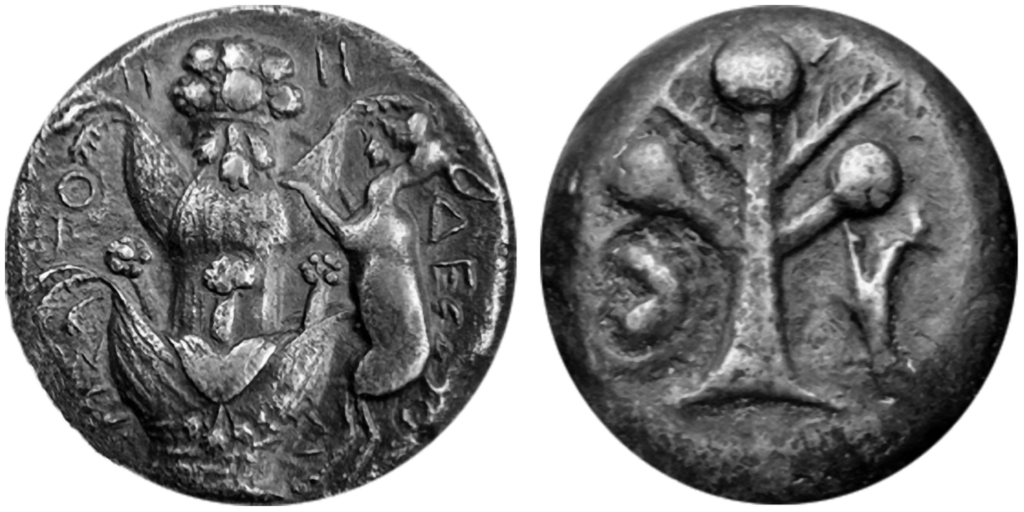Let’s dive into the world of ancient birth control. This journey takes us back thousands of years, exploring the ways people managed family planning before modern medicine. We’ll uncover why these practices mattered, how they worked, and what we’ve learned from them.
The Need for Birth Control in Ancient Times
In ancient times, birth control wasn’t just about avoiding unwanted pregnancies. It played a big role in how societies managed their resources and maintained stability.
- Resources were limited, so population control/management was important. Too many mouths to feed could mean disaster for a community, and not just in terms of starvation.
- Just like today, ancient couples wanted control over their family size. This helped them decide when to have kids and how many they could support.
- Cultural norms shaped attitudes toward birth control. In some places, having many children was a status symbol. In others, smaller families were ideal.
Historical Methods of Birth Control

Ancient civilizations came up with all sorts of ways to control birth – far more than we realize. Some were practical, some were based on beliefs, and some were weird as hell. Some worked to a degree, while others were more about hope or superstition than science. They also often depended on timing and proper application.
- Flora Options: People used plants and herbs (and other natural materials), hoping they would prevent pregnancy. Persia was particularly known for its herbal contraceptives.
- Animal Membranes: Early versions of condoms made from animal bladders or intestines.
- Celestial Events: Some cultures believed the moon and stars influenced fertility. Some Native American tribes and people from India used lunar phase timing. Even though this wasn’t the greatest birth control, it still laid the groundwork for more modern fertility awareness methods.
- Jewelry: In many ancient cultures medicine and magic were closely linked. Amulets and talismans were worn to ward off pregnancies, these were believed to have otherworldly powers.

The Mysterious Silphium:
Silphium, a cousin to fennel, was an ancient plant used by Greeks and Romans and has long puzzled historians and botanists. This plant was not only prized for its contraceptive properties but also held economic significance, depicted on coins and in art. It was so popular that it was eventually harvested to extinction.
But I wasn’t just for stuff that happened between the sheets. It was a magic cure-all that could fix “growths of the anus” (ouch), and function as an aphrodisiac – which is funny (eat this to make you horny but not have babies). Luckily you could just eat the plant, instead of putting it in places where the sun doesn’t shine. Although there were mentions of soaking wool in the juice and slipping it in like a tampon.
Asafoetida (Ferula Asafoetida), a less-famous relative to Silphium, was used in ancient Persia and India as a contraceptive resin.

Breastfeeding
Prolonged location delays ovulation, naturally spacing out pregnancies. This was popular across Africa, Asia, and the Americas. Some people still practice this today.
The Kahun Gynaecological Papyrus:
This ancient papyrus is one of the largest manuscripts we have from ancient Egypt (dating back to around 1800 BCE). Part of it speaks extensively about medical issues and different contraceptive methods, including the use of crocodile dung pessaries. Modern researchers have analyzed these texts and found that even back then they had a pretty sophisticated understanding of reproductive health (even if poo and sour milk combinations were the norm).
Mercury and Lead
In ancient China, some women would drink mixtures of these two metals. There were risks that (obviously) would often lead to severe health issues or even death. This shows just how desperate people were to find effective birth control.

The Soranus Method
This Greek doctor from the 1st and 2nd centuries AD had some interesting ideas about preventing pregnancy. He recommended using wool tampons soaked things like pomegranate juice, which he believed could kill sperm – but women also just taste the seeds. Then again, Soranus also told women to squat and sneeze after sex to help expel semen. Sexy.
Persephone’s Tale
Zeus’s daughter, and her accidental consumption of a pomegranate seed in Hades, had real-world implications beyond its mythic origins. One Dr. Riddle showed this was semi-effective through his 1930s research indicating its fertility-reducing effects in laboratory animals. We know now that the seeds do contain hormone-altering properties.
Speaking of seeds (not the sperm kind), in South and Southeast Asia men used papaya seeds to affect sperm production and motilting.
Contraceptive Sponges
In ancient Greece and Rome, women soaked sea sponges in vinegar or other acidic liquids and inserted them before intercourse. The acidity was believed to kill sperm. This method is one of the early versions of the modern contraceptive sponge.

Honey and Acacia Leaves
Another go-to for ancient Egyptians often used a mixture of honey and acacia leaves. The acacia leaves are fermented into lactic acid, which could act as a spermicide and the honey’s antibacterial properties gave it an extra oomph.
Fun fact, you can still find Acacia at your local grocery store. It’s crushed, ground, and sold in whole form – used for pain, irritation, healing, oral health, and health, fiber, coughs, and sore throats. Just don’t put it in your hoo-haw.
Medieval Tar
Islamic scientists also thought about methods for men. Persian scientist Ali ibn Abbas suggested coating a man’s penis with tar before sex to act as a natural condom. This method, while memorable, likely wasn’t popular due to the strong smell and sticky mess.

Wild Yam
Indigenous tribes in Central and South America used wild yams for birth control. They contain natural compounds that can regulate hormones and potentially prevent ovulation. Modern science has confirmed that certain types of yams have properties similar to those used in hormonal birth control today.
The Ant’s Egg Method
In medieval Europe, some women believed that carrying an ant’s egg in their armpit could prevent pregnancy. This practice came from a mix of folklore and misguided traditions that were passed down through the generations.
Queen Anne’s Lace
Also known as Wild Carrot, Greek and Roman women chew the seeds, hoping to get busy without any 9-month consequences. Recent studies suggest that there are compounds in the seeds that can interfere with hormone production. So, that’s one they got right.

Emmenagogues
Emmenagogues are any herbs or plants that are used as supplements to stimulate menstrual flow. Things like rue, pennyroyal, and black cohosh were popular options.
Metal and Stone Objects
If people thought modern IUDs were a pain in the ass (well, vagina) ancient Arab and Chinese women used small, carved pieces of stone and metal to try and create a hostile environment for sperm or a fertilized egg. Still, knowing about this method so long ago is impressive.
Aristotle’s Advice
Aristotle, the famous philosopher, believed that the smoothness of cedar oil, frankincense, olive oil, or lead would cause the man’s seed to slip off, preventing conception. Though Aristotle is still highly respected today, some of his ideas, like this one, didn’t hold water.

Medieval Methods
Dominated by the Catholic Church, contraception wasn’t widely promoted. Yet, some doctors did suggest methods they thought might work. The most common one was “coitus interrupts”, or the withdrawal method. One of the weirder suggestions involved wearing weasel testicles around the thighs during sex. This method, unsurprisingly, wasn’t very practical and could lead to some seriously awkward moments.
Casanova’s Lemons
Giacomo Casanova, famous for his romantic escapades in the 18th century, was worried about fathering too many children. He encouraged his lovers to use various birth control methods. One of them was known as “Casanova’s lemons,” which involved cutting a lemon in half, squeezing it a bit, and using it as a cervical cap.
Though Casanova claimed to have invented this technique, similar methods had been around for centuries. The acidic lemon juice probably caused discomfort, but detailed accounts are scarce, likely because users were too busy dealing with the burning sensation between the legs.

Contraceptive Amulets
In ancient times, birth control amulets were quite common. These included dried herbs, beaver’s testicles, mule’s earwax, and even the bones of a black cat. While their effectiveness is questionable, these amulets show just how far people were willing to go to prevent having a bun in the oven.
The Kama Sutra and Ayurvedic Practices
The Indian text on sexuality mentions contraceptive methods like a paste made from honey, ghee, and palasha (Butea frondosa) flower powder. Also, Ayurveda, India’s traditional system of medicine, includes many herbal remedies for preventing pregnancy – like eating the seeds of long pepper (Pippali) mixed with clarified butter.
Ancient Trade Routes and Knowledge Exchange

The Silk Road wasn’t just a trade route for fabrics and spices. It was also a conduit for medical knowledge. From the herbal contraceptives of China to the medical practices of the Middle East, the Silk Road bloomed a rich exchange of ideas. This cross-cultural interaction led to the blending and/or tweaking of various birth control practices for better effectiveness or a domino effect to other discoveries – often in areas that weren’t tied to family planning.
Evolution of Birth Control Knowledge
Our understanding of ancient birth control has come a long way, thanks to archaeological discoveries, research advancements, and the hard work of historians and scholars. Artifacts and documents from excavations give us a peek into how ancient people practiced birth control, while modern science helps us understand the mechanisms behind these ancient methods.
Modern technology also helps scientists analyze the chemical compositions of ancient contraceptives. Residue analysis from containers found in excavations shows the ingredients used and their potential effectiveness. This scientific approach helps back up historical records and offers more concrete evidence instead of just old anecdotes.
Closing Thoughts
Our journey through ancient birth control reveals the complexity of human history and the evolution of family planning. This exploration bridges the past and present, enriching our understanding of reproductive choices across time. Keep digging, stay curious, and appreciate the intricate tapestry of our shared history.
Want More Interesting Articles?
- Ancient Dildos and Sex Toys – Learn How Our Ancestors Got Freaky
- Vagina Art – Megumi Igarashi’s Fight Against Japan for Her Vulva
- Scary Vagina Facts That Will Make You Squirm



